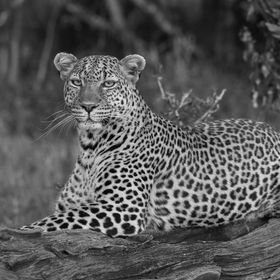

Footprintsinthedust
Follow
The AfriCat Foundation in Namibia works to help reduce conflict between farmers and big cats. This cheetah, which had been trapped by a farmer, was in a 4 hecta...
Read more
The AfriCat Foundation in Namibia works to help reduce conflict between farmers and big cats. This cheetah, which had been trapped by a farmer, was in a 4 hectare holding pen being prepared for release into the Okonjima Reserve in Namibia. It has been successfully released since this photo was taken.
Read less
Read less
Views
373
Likes
Awards
Member Selection Award
Cool Capture
Top Choice
Outstanding Creativity
Superb Composition
Absolute Masterpiece
Magnificent Capture
Peer Award
Superior Skill
Categories
Same photographer See allBehind The Lens
Discover more photos See all
Behind The Lens
Location
This photo was taken in the Okonjima Reserve in Namibia in 2014. I had travelled there to visit the Africat Foundation that is dedicated to protecting large carnivores. The cheetah, which had been trapped by a farmer and then rescued by the Foundation, was kept in a holding pen while it was being prepared for release into the wider reserve.Time
It was late in the day with the Sun's rays shining almost parallel to the ground. This produced a warm glow on the cat's flank, while the rest of its body was in the shadow of the termite mound. The horizontal light also helped emphasise the colour of the dry grass in the background.Lighting
The image would have benefitted from some fill in flash but I didn't have a flash that was powerfull enough to make a difference so I had to rely on post-processing to open up the shadows.Equipment
This was a handheld shot taken on a Canon EOS 70D with a Tamron 28-300mm f/3.5-6.3 lens at 119mm. No other equipment was used. (The technical details for those who are interested are: 1/250s, f/5.6, ISO 800.)Inspiration
There were three cheetahs in the holding pen with this one standing alone on a termite mound. When it lay down and stared into the distance, I thought it looked so forlorn that I wanted to capture the pathos of the moment. A moment when this animal, used to hunting and running free across the plains of Africa, found itself in a relatively small pen (it was four hectares – almost ten acres – in area, so not that small), possibly thinking about the life it once had (not knowing that it would shortly return to that life once again). A few seconds later one of the other cheetahs joined it on the mound, this one stood up to greet it and the moment was gone. My wildlife photography is all about capturing such ephemeral moments and preserving the memories of a single place and point in time in order to tell a bigger story.Editing
I always shoot in RAW with the colour balance set to sunny and process my images in Adobe Camera RAW. This was especially useful for an image such as this which was taken in high contrast lighting. The daylight colour balance brought out the colours of the sunset so I din't have to adjust that but I did have to reduce the highlights and whites settings to recover the detail in the cheetah's fur and the branches of the tree. I also increased the shadows setting to enable the parts of the image that were not directly lit by the Sun to become more visible. I then reduced the the black level slider until the image looked more natural. Unusually for me, no further processing was carried out when I exported the image into Photoshop.In my camera bag
I bought a Canon EOS R after my previous camera was stolen. I usually have a second hand (Mark I) EF 100-400mm f/4-5.6 lens stuck on the front with an EF-RF adaptor and, sometimes, with a 1.4x extender. I use an EF 24-105mm f/4 zoom for wider shots. I have recently bought an RF 85mm f/2 macro lens and look forward to using it for low light photography as well as my macro work. My second body is currently an EOS M5 that I won in a competition. It has a much better sensor and is more compact than the 70D that took this photo so it has replaced the latter.Feedback
Many game drives are designed to let people see as many different animals as possible. As a photographer, however, you want to spend time with an animal, getting to know it and waiting for that moment when you can capture something of its character. So, if you can afford it, try to travel on a photographic safari or, at the very least, in a vehicle full of people who are willing to wait and who are interested in observing the animals. Sometimes you have to wait for a long time before the animal does something interesting. When it does, you might have very little warning, so it is worth having a camera support (either a bean bag or monopod) to take the weight of the camera while you point it in the right direction. Take a few test shots while you wait to ensure that your exposure is right for the effect you are looking for – don't expect the camera to get it right ever time – this is especially true as the light levels change at dawn and dusk.










































